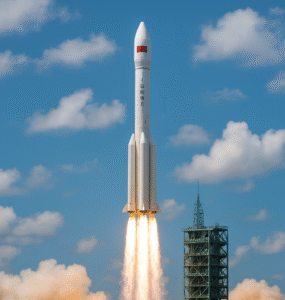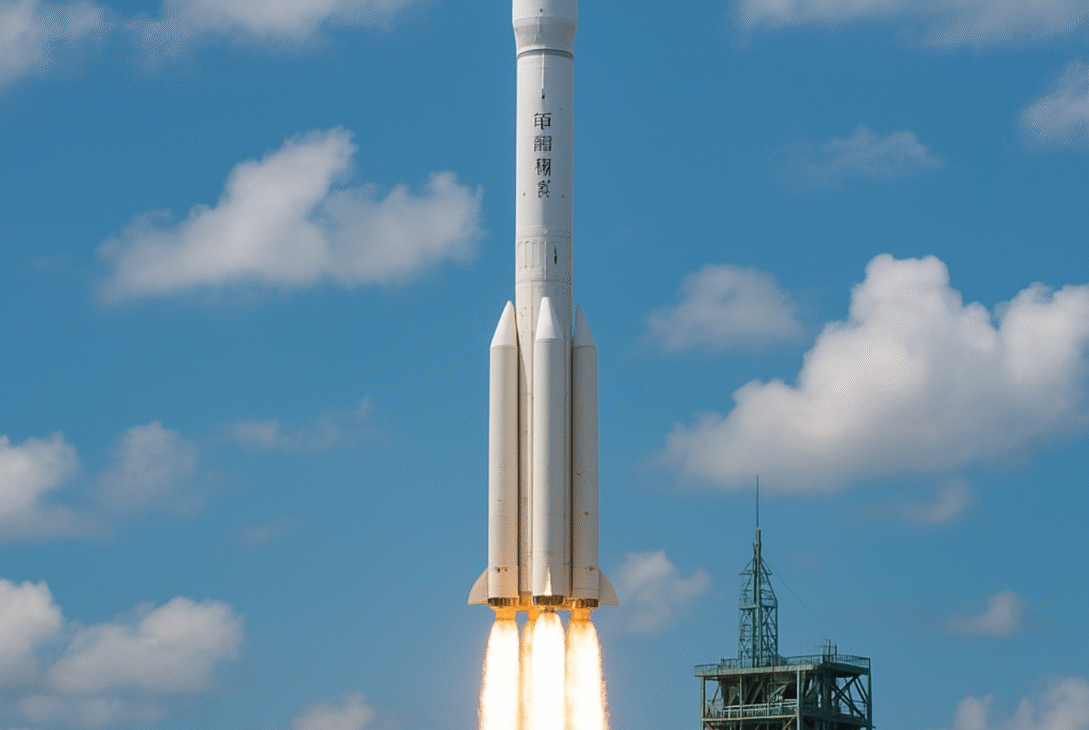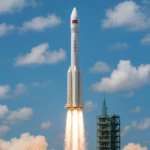Pakistan to Launch Remote Sensing Satellite from China
Pakistan is at the point of expanding its vision into the sky thanks to a state-of-the art satellite that can remote sense which was launched by China. This achievement is a sign of the expanding technology and space partnership that exists between Islamabad along with Beijing. Equipped with high-resolution imaging, the satellite is expected to bring advancements across many sectors, including urban plan as well as agriculture, disaster management and much more. In this article we look at the way this satellite’s launch is integrated in Pakistan’s re-emerging strategy for space, what advantages will be forthcoming, and the wider geopolitical implications of this collaboration.
Launch Context & Mission Background
In late July 2025, Pakistan’s remote sensing satellite PRSS-1 was propelled into orbit aboard a Kuaizhou-1A rocket from China’s Xichang Satellite Launch Center. The satellite was quickly in the orbit it was assigned, and mission controllers verifying that the satellite’s systems functioned as intended.
As per SUPARCO’s announcement on July 31, 2025 statement this launch is a significant moment in Pakistan’s observation mission, showing improved capabilities in mapping, monitoring and resilience efforts.
Strategic Applications & National Benefits
When it is fully operational, the satellite has already bringing value to the following areas of importance:
Urban & Infrastructure Planning by capturing precise photographs, satellites are able to assist authorities in tracking the spread of urban sprawl, improve infrastructure development, and aid in the regional plan.
Disaster Preparedness & Response: Imagery will aid in early detection of floods, landslides, and earthquakes–boosting disaster resilience and enabling swift response efforts.
Agriculture Productivity: Precision farming can become more feasible with the maps of patterns in crop growth and effective water resource management improving the security of food.
Environment Monitoring Monitoring continuously of the retreat of glaciers, deforestation as well as climate changes can enhance Pakistan’s environmental and climate-change plans.
CPEC & National Development Projects: This satellite can assist for mapping the routes used by transportation companies in addition to assessing the geohazards that exist, as well as making sure that resources are properly utilized in the China-Pakistan Economics Corridor (CPEC) Framework.
SUPARCO insists on the bigger objective of achieving sustainable socioeconomic improvement while strengthening the autonomy of Pakistan’s technology.
Pakistan’s Expanding Space Programme
The launch of this satellite builds upon the recent excitement within Pakistan’s space industry:
PRSC-EO1 In the month of January in 2025, it was Pakistan’s first locally developed electro-optical remotely sensing satellite. in the “Space Vision 2040” initiative.
ICUBE-Qamar (ICUBE-Q): A lunar-sized nanosatellite that was launched by the Chinese Chang’e-6 mission in the month of May 2024. Pakistan’s very first deep-space mission.
PakSat-MM1R The satellite for communication that was launched in May 2024 is which is now operational and enhancing the connectivity of Pakistan and its digital capabilities.
This is a sign of SUPARCO’s determination to diversify Pakistan’s space assets – from earth observation to lunar exploration as well as communications networks.
Diplomacy & Strategic Partnership
Beyond the technical benefits This launch also strengthens China-Pakistani relations:
The Planning Minister Ahsan Iqbal celebrated the launch by describing it as a symbolic of friendship “higher than the skies,” highlighting the geopolitical as well as emotional importance.
The satellite, developed together with China Electronics Technology Group and MicroSAT China — marks a major important milestone in Pakistan’s comprehensive Earth observation plan, bolstering the its sustainability and development objectives.
The Pakistani government’s larger goal is collaboration with China in AI and quantum computing and nuclear technology during meetings at the highest level with China, indicating an integration of multiple sectors in technology.
Future Outlook
In the future, Pakistan’s plan will include more sophisticated satellite missions and a more extensive tech collaboration with China. There’s a rising possibility about an Pakistani astronaut joining China’s space station over the next few years. Through initiatives such as Space Vision 2040, Pakistan is seeking to build an own satellite infrastructure that can support both the development of its economy and also scientific capabilities.
Conclusion
The launch of Pakistan’s satellite for remote sensing from China isn’t just an technological feat, it’s also a testimony to the international community, nation-building strategies as well as an optimistic well-informed future. Once images start pouring into the world, we can expect cities to become more intelligent and farms to grow as well as communities to grow more secure, all guided by the watchful eyes over.
















